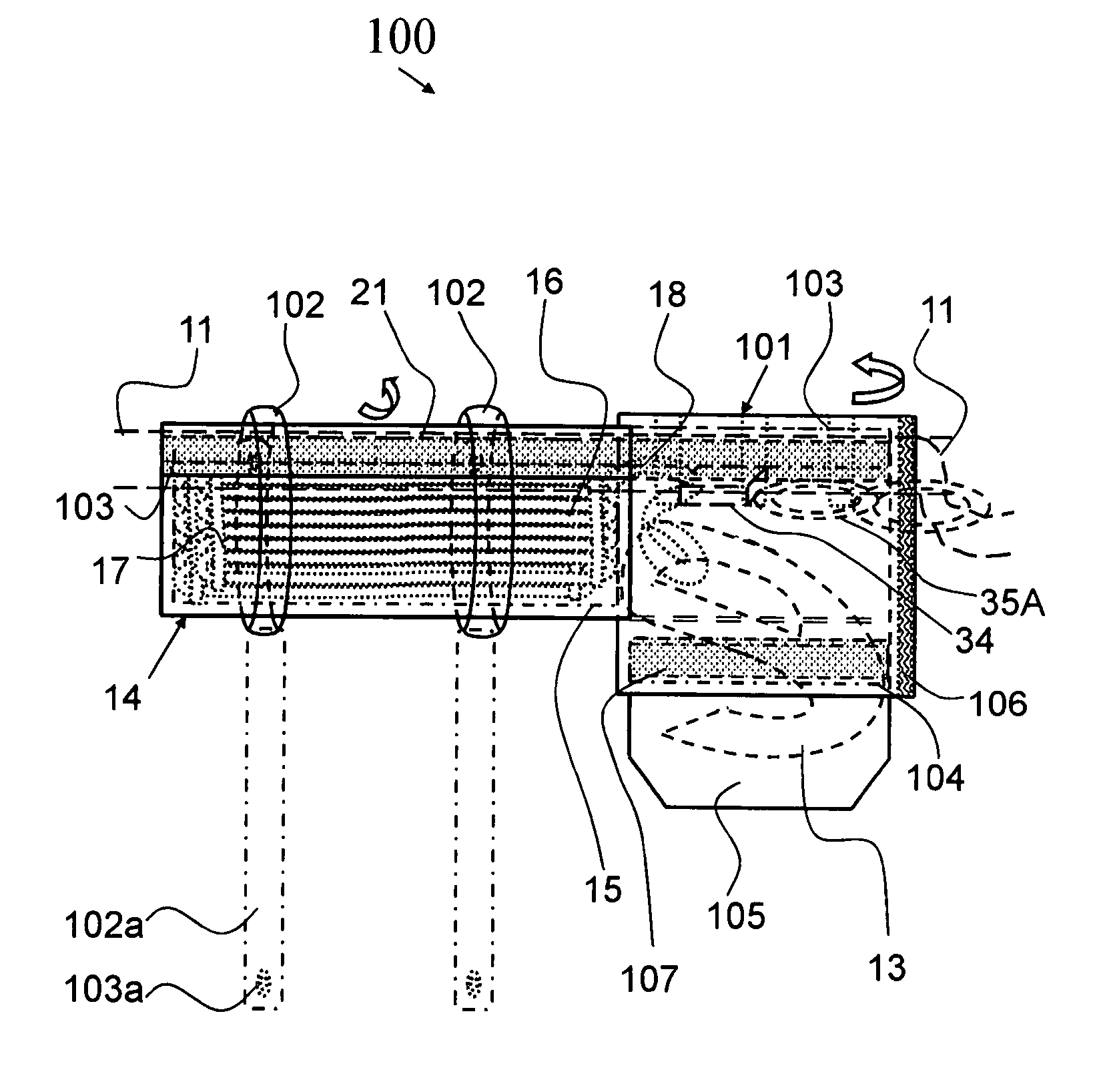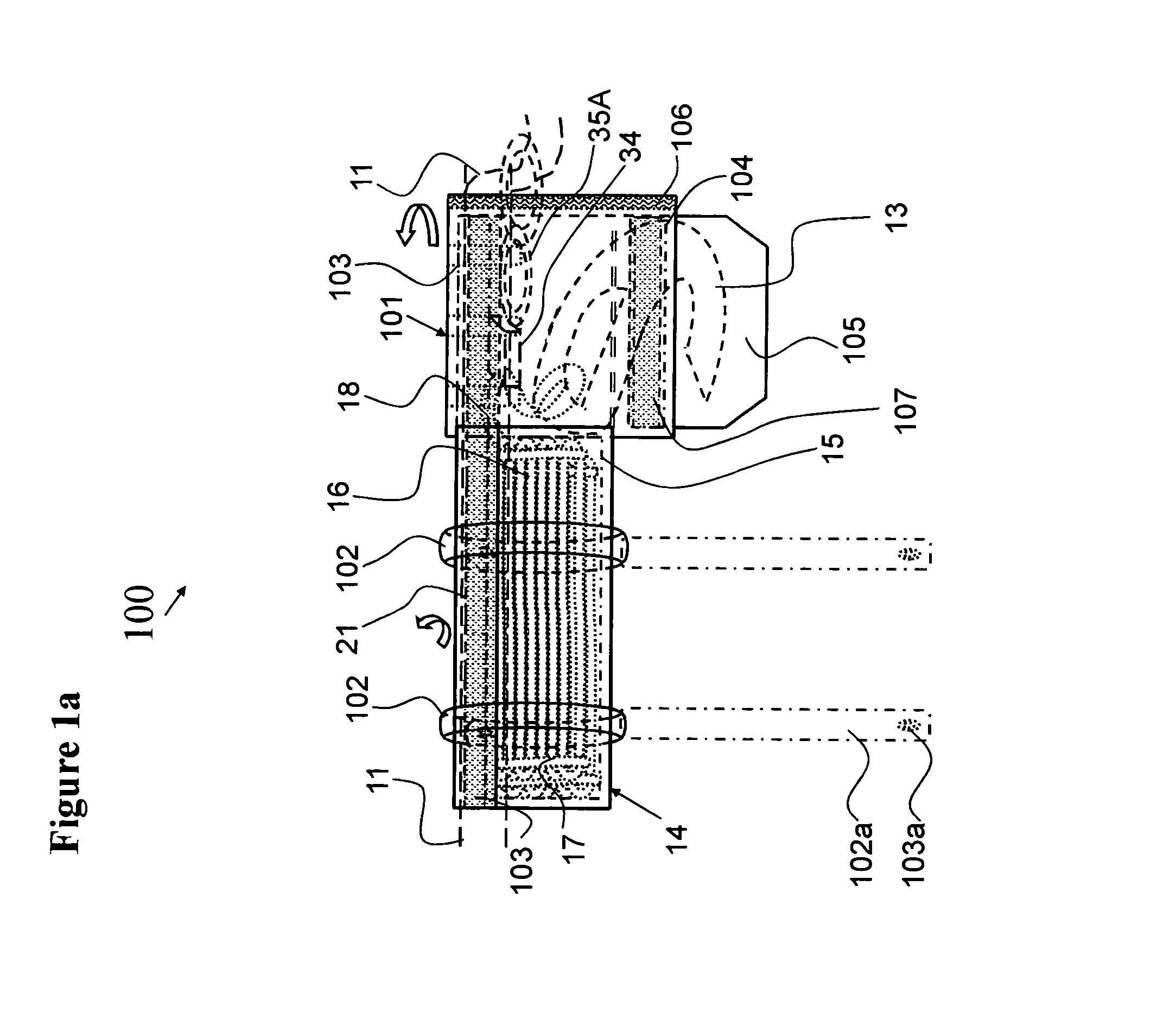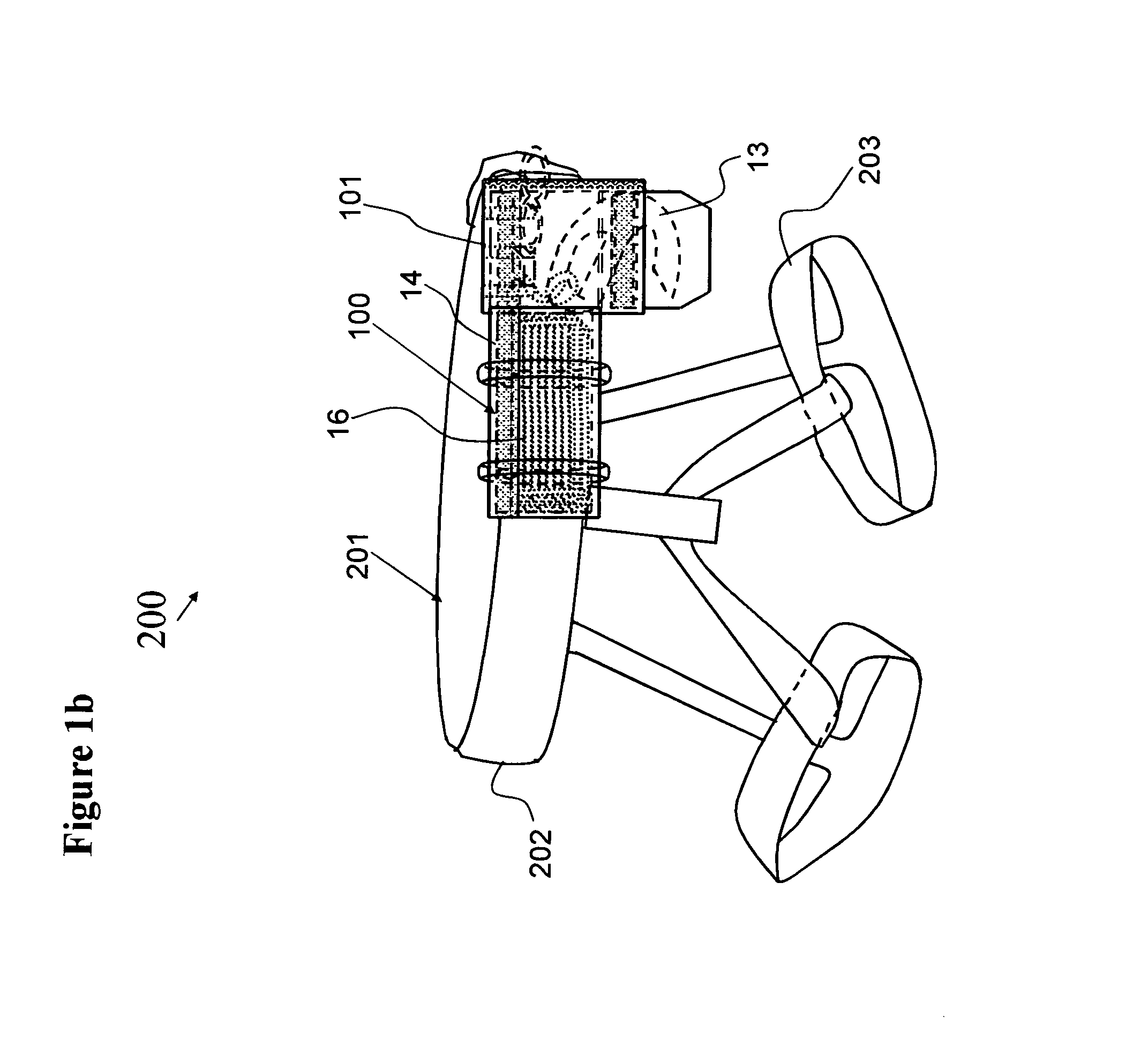Fire fighter's personal escape system
a personal escape and fire fighter technology, applied in the field of wearable personal escape systems for fire fighters, can solve the problems of increasing the probability of firefighter developing long-term back or leg problems, preventing the firefighter's free delivery, and preventing the firefighter from accomplishing his or her work, so as to achieve a high rate of controlled descent and adjust the descent rate
- Summary
- Abstract
- Description
- Claims
- Application Information
AI Technical Summary
Benefits of technology
Problems solved by technology
Method used
Image
Examples
Embodiment Construction
[0061]This invention relates to a lightweight personal escape system worn and used by a fire fighter during an emergency situation. The system provides capability for a descent of approximately 50 feet without having to search for locations that provide basis for attachment of an escape rope. This lightweight system is worn by the fire fighter as an accessory that is securely attached to a belt. The lightweight personal escape system includes benefits emanating from: (i) the location of the rope-carrying pouch, which is located near the lumbar section of the back; and (ii) use of a rope applied in as a single use deployment rope arrangement for real life emergency situations on the job, or multiple use deployment rope arrangement for training courses emulating real life emergency situations. Generally, the lightweight system provides at least one discrete rope pouch, and optionally both a rope pouch and a hook pouch, attached or detached to one another. The optional hook pouch prefe...
PUM
 Login to View More
Login to View More Abstract
Description
Claims
Application Information
 Login to View More
Login to View More - R&D
- Intellectual Property
- Life Sciences
- Materials
- Tech Scout
- Unparalleled Data Quality
- Higher Quality Content
- 60% Fewer Hallucinations
Browse by: Latest US Patents, China's latest patents, Technical Efficacy Thesaurus, Application Domain, Technology Topic, Popular Technical Reports.
© 2025 PatSnap. All rights reserved.Legal|Privacy policy|Modern Slavery Act Transparency Statement|Sitemap|About US| Contact US: help@patsnap.com



